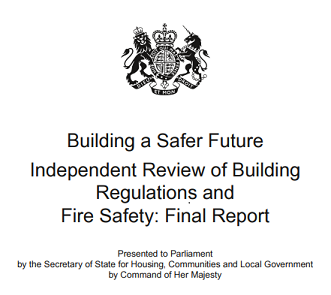The Golden Thread for Trussed Rafters
30th July 2021
TRA members have always had key safety and quality information to hand, but they now have the opportunity to put it to good use.
Dame Judith Hackitt’s ‘Building a Safer Future’ report in 2018 highlighted the need to record details of how a building was designed, built, and will be maintained. A so-called ‘Golden Thread’ of information was needed, along with a record of who signed off every phase of the design, construction, and maintenance process, to provide accountability.
Providing detailed design information along the supply chain to the end user and the people who might maintain the building in the future is no problem for TRA members. Members have always been required to be able to give their customers detailed information about the safety and quality of their products, as set out in the TRA Buyers’ Guide.
Members use the latest software to design trussed rafters, complying with EN 1995-1-1 (Eurocode 5), and fabricate them in accordance with EN 14250 (Timber structures – Product requirements for prefabricated structural members assembled with punched metal plate fasteners).
A third document – in the UK PD6693, and in Ireland SR 70 – sets out how this process takes place, by identifying the two critical people involved in the design stage: who the building designer is, and who designed the trussed rafter.
The first section of the TRA Buyers’ Guide also sets out sharing information.
“Providing product information using the ‘Golden Thread’ principles will be easy for TRA members as the data is fundamental to the software design and can easily be output in whatever format is required. It has been there and waiting to be used for a long time, but at present, no one is asking for it,” explained Nick Boulton, TRA chief executive.
The information easily available in the design includes all aspects of the product, including load capacity, strength, dimensions, profile, layout and bracing information. Sustainability credentials, plus all the other claims made for BIM, can be provided, but more importantly information is routinely provided on who designed and supplied the product, and where to go if changes need to be made in the future.
Another hugely important part of the information made available from the design stage are 3D visuals. They let the wider design and construction teams understand how a roof or floor package fits into the rest of the elements of the building, where any conflicts might be and in what sequence the work will need to be carried out.